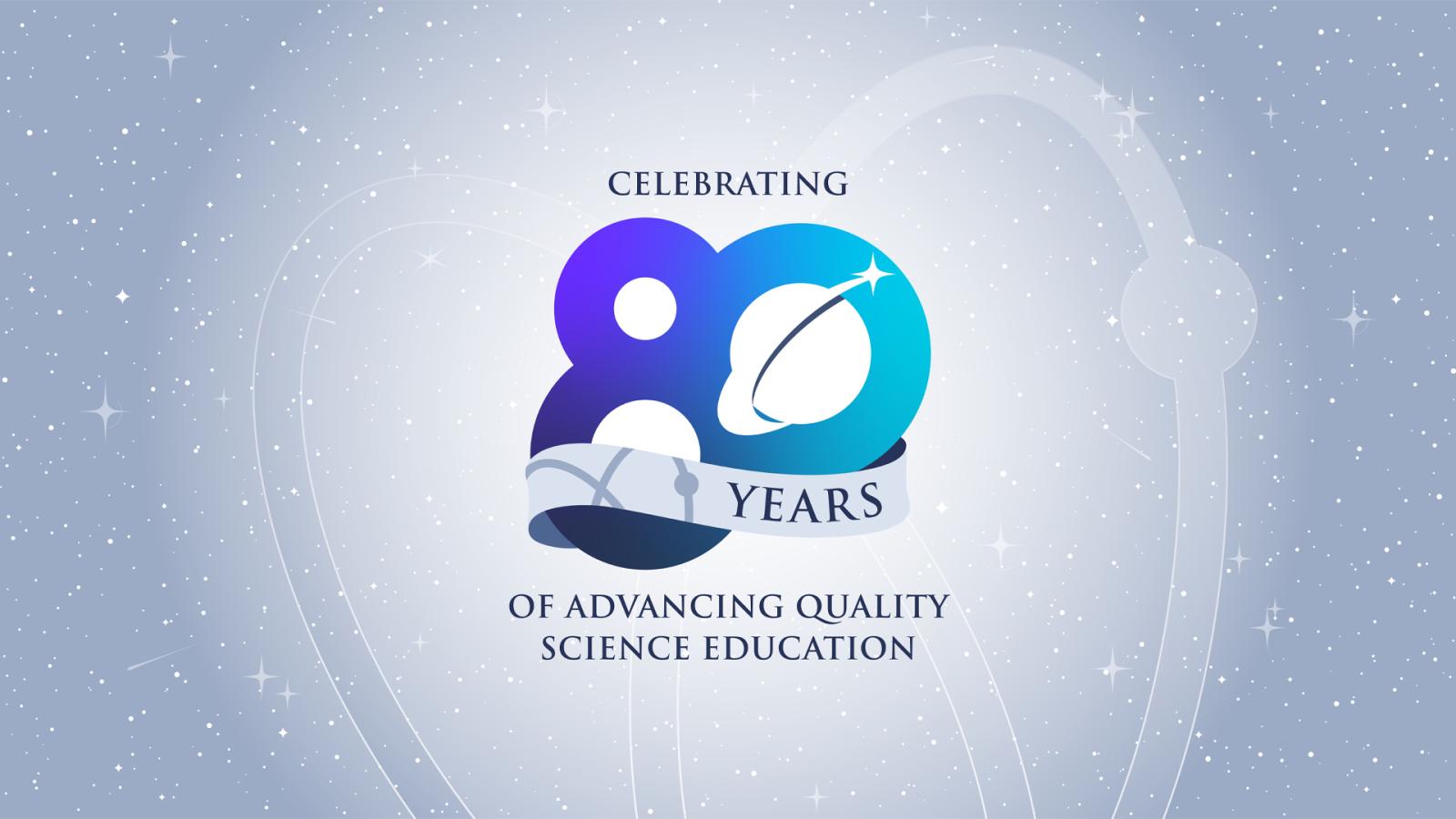Pioneering Innovations: NSTA’s Role in Advancing Science Education
By Christine Anne Royce, Ed.D.
Posted on 2024-08-27

Disclaimer: The views expressed in this blog post are those of the author(s) and do not necessarily reflect the official position of the National Science Teaching Association (NSTA).
To teach is to touch the future.
—a sentiment paraphrasing the words of Christa McAuliffe, the first teacher astronaut
Looking toward the future and improving science education has always been one of NSTA’s touchstones. When marking any anniversary, it is customary to reflect on where we were, where we are now, and where we might be going.
The Beginning of the Future
The 1944 version of the NSTA Constitution stated that the “general purpose of the National Science Teachers Association shall be to stimulate, improve, and coordinate science teaching at elementary, secondary, and collegiate levels of instruction.” (The NSTA Story 1976, p. 61) Today, we embrace the vision that “Science literacy and education are recognized as vital to the future of our society, enabling us to make informed decisions about the collective challenges we face.” Our core vision has been clear from the start.
Curriculum in the Classroom: Looking Back as We Educate Forward
The challenge to teachers and curriculum makers is to exert this influence toward better-defined goals and purposes.
This statement was written by NSTA’s first Executive Secretary, Robert H. Carleton, and is the challenge he expressed at the association’s 25th anniversary. The curriculum or what has been taught in the classroom is one of the key areas in which NSTA has been a leader throughout its history. In the post-Sputnik period, NSTA supported the National Defense Act and emerging curricular programs. In the late 1970s and early 80s, the association espoused the Science, Technology, and Society push. NSTA even launched its first Search for Excellence in Science Education to identify positive aspects of current science teaching.
With the release of A Nation at Risk in 1983, the standards era began, and NSTA was actively involved in individual initiatives and collaborative efforts to help restructure the way science is taught. As an association, NSTA developed the Scope, Sequence, and Coordination program, which was supported and funded by the National Science Foundation in 1994, but ended three years later. Opportunities and challenges such as these informed NSTA leadership.
NSTA was also active and integral during the same time frame in developing the National Science Education Standards (NSES), released in 1996. NSTA served on the Advisory Committee and developed supporting materials such as the NSTA Pathways to the Science Standards to help implement the NSES. NSTA continues to spearhead programs to support the Next Generation Science Standards, released in 2012. Teachers of any era exert an extraordinary influence, and by supporting teachers with standards-aligned and forward-focused science content, NSTA enables the positive influence of today’s teachers to reach students in the future.
Teaching the Teachers Through Professional Learning
“By giving teachers the tools they need to challenge themselves and to continue growing professionally, you are helping to make our nation’s future even brighter.”
—letter from President Bill Clinton to NSTA President JoAnne Vasquez, December 27, 1996
NSTA both heard the need for and realized the benefit of connecting teachers to support one another. Through programs such as Building a Presence for Science, which this quote refers to, NSTA developed a national network for disseminating science education information. This program served as an information stream for more than two decades. Building a Presence is just one of many long-term initiatives that has enhanced teachers’ professional development.
As early as 1970, NSTA acknowledged the importance of professional learning and development and was aware that professional learning needed to be tailored for individual teachers’ needs. Today, NSTA has the Professional Development Indexer, which helps you recognize your needs and identify key learning resources.
Bringing science educators together for learning and professional development has been a key part of the association’s national and area conferences since the first one was held in Pittsburgh in 1953. Year after year, the conferences have fostered the networking and sharing of ideas—including during the COVID-19 pandemic of 2020–2021, when we “went virtual” with NSTA Engage. Today, teachers can take advantage of Professional Learning Institutes offered as a pre-conference experience or focus on selected pathways during a conference for in-depth learning.
Professional Impact Through Partnerships and Print
“The challenge to NSTA and to the profession is to tie science education together with the lives of people and the problems of society in a truly functional manner.” (Carleton 1968, p. 30)
NSTA met this challenge by publishing materials in-house and making them available to its members. Most recently, NSTA has focused on producing quality materials that align with and support A Framework for Science Education K–12 and the Next Generation Science Standards. NSTA has been a leader in developing groundbreaking curricular and supporting programs. Often, these initiatives and products have been created in collaboration with other groups, programs, and associations. For example, NSTA’s first written statement related to influencing and impacting the curriculum, The Place of Science in the Education of the Consumer, was published in 1945, just a year after NSTA was founded. Since 1973, NSTA has partnered with the Children’s Book Council to produce the Outstanding Science Trade Books List for teachers and librarians alike. Over the years, NSTA has also collaborated with external groups, such as with Abbott Laboratories when they co-produced The Science of HIV (1997), which helped educators teach about HIV and AIDS in the science classroom. In 1995, DuPont and NSTA developed eight books in the Understanding Our Environment series. These are just a few examples of NSTA’s partnerships.
NSTA initiatives didn’t focus solely on producing materials for teachers. They also created materials for students that could be used in class or individually. One such program was the Vistas of Science book series. This series, which featured 13 separate titles published between 1961 and 1967, was a joint project of NSTA and NASA and published through a relationship with Scholastic Inc. NSTA has long experienced the benefit of leveraging relationships that help improve science, science education, science teaching, and science materials.
From the members who write for the journals to the authors who submit their book manuscripts, NSTA— and later, NSTA Press—has published materials to support the teaching and learning of science.
Pushing Boundaries and Leveraging Technology
“Science educators will take a great step forward when they learn to distinguish between science and technology, yet are able to use technology to teach science.” (NSTA 50th Anniversary Scrapbook 1994, p. 20)
When that statement was written, the internet existed, but not for the mass population; personal computers could be purchased, and technology was starting to seep into the classroom. NSTA capitalized on this new horizon and began to develop strategies and methods by which technology could be used to support science teaching and learning. In July 2000, the first NSTA WebWatcher Summer Institute occurred in Arlington, Virginia. Ultimately, these institutes and workshops helped develop Web Guides that would allow teachers to maximize technology through the identification of sites. In 2003, the NSTA website promoted these WebWatchers Science Guides by encouraging teachers to “leverage the internet as a powerful interactive tool to enhance student learning.” (NSTA website, 2003)
NSTA also took advantage of this “new” interactive tool—the internet—to enhance student learning and teacher professional development. The association launched the NSTA Science Modules in 2003, an early entry into online professional development for science teachers.
NSTA continued to be forward-thinking and a leader in offering online opportunities for teachers. This allowed the association to reach classrooms throughout the country, meet the needs of more science teachers, and deliver cutting-edge instruction using online platforms. Through its NSTA Learning Center, NSTA provided the platform for educators to create their personal My Library to curate resources and track their own professional development. It also supported new teachers through the NSTA New Teacher Academy, an e-mentoring program that reached teachers across the country electronically. Now more than two decades later, NSTA has continued to develop and offer quality online programs.
Conclusion
“As we look to the past with an eye on the future, it is clear that the science taught and need for science educators who create a love of learning and interest in students is as necessary today as it was in 1944.” (The Science Teacher, January 2019, p. 5)
It is somewhat nostalgic, somewhat historical, and informative. Merging an understanding of the past with a vision for the future is exactly what NSTA has focused on for 80 years.
Just a few years ago, NSTA produced the video Reach for the Stars, which examines the impact of science and science education. Then, now, and in the future, know that NSTA has and will continue to support you and your endeavors.
References
Carleton, R.H. 1976. The NSTA story: 1944–1974. Washington, DC: NSTA.
Carleton, R.H. 1968. The NSTA silver year review. Science and Children 6 (1): 23–30.
NSTA’s 75th: A beginning, present, and future connected by the need for science education. The Science Teacher 86(5): 5. NSTA 50th Anniversary Scrapbook. 1994.

Christine Anne Royce, Ed.D., is a past president of the National Science Teaching Association and currently serves as a Professor in Teacher Education and the Co-Director for the MAT in STEM Education at Shippensburg University. Her areas of interest and research include utilizing digital technologies and tools within the classroom, global education, and the integration of children's literature into the science classroom. She is an author of more than 140 publications, including the Science and Children Teaching Through Trade Books column.


